The boat turned around, motoring again up the channel. Surrounded by blue water and abundant wildlife, I kept my eyes on my shortened fishing rod (I had broken off the tip in the melee of landing a giant trevally two days prior).
And then. Tappity, tappity. The rod tip might have been imperfect, but it still quivered when a fish hit. It tapped again, then bent over, and I was tight to a small bluefin trevally. By now, what came next was like clockwork: reel quickly, land, measure, insert tag, release.
We had just made 8 passes through this channel and had landed 10 bluefin trevally. Clockwork.
Update from Palmyra
A year ago, I participated in the Fishing for Science program on Palmyra Atoll, a remote uninhabited island nearly 1,000 miles south of Hawaii. The Nature Conservancy acquired the privately-owned Palmyra Atoll in 2000, to run as a nature preserve. It then sold roughly half of the property to the U.S. Fish and Wildlife Service, which expanded protection by designating the islands and surrounding waters as a National Wildlife Refuge out to 12 nautical miles.
Given its remote location and protected status, Palmyra has become a hub of conservation research in the blue-water marine protected area, on coral reefs, fisheries, oceanography, invasive species removal, tropical rainforest restoration and many other topics.
Fishing for Science launched in part to investigate the sustainability of catch-and-release recreational fishing at the atoll for four popular sportfish species: giant trevally, bluefin trevally, peach-faced triggerfish and titan triggerfish.
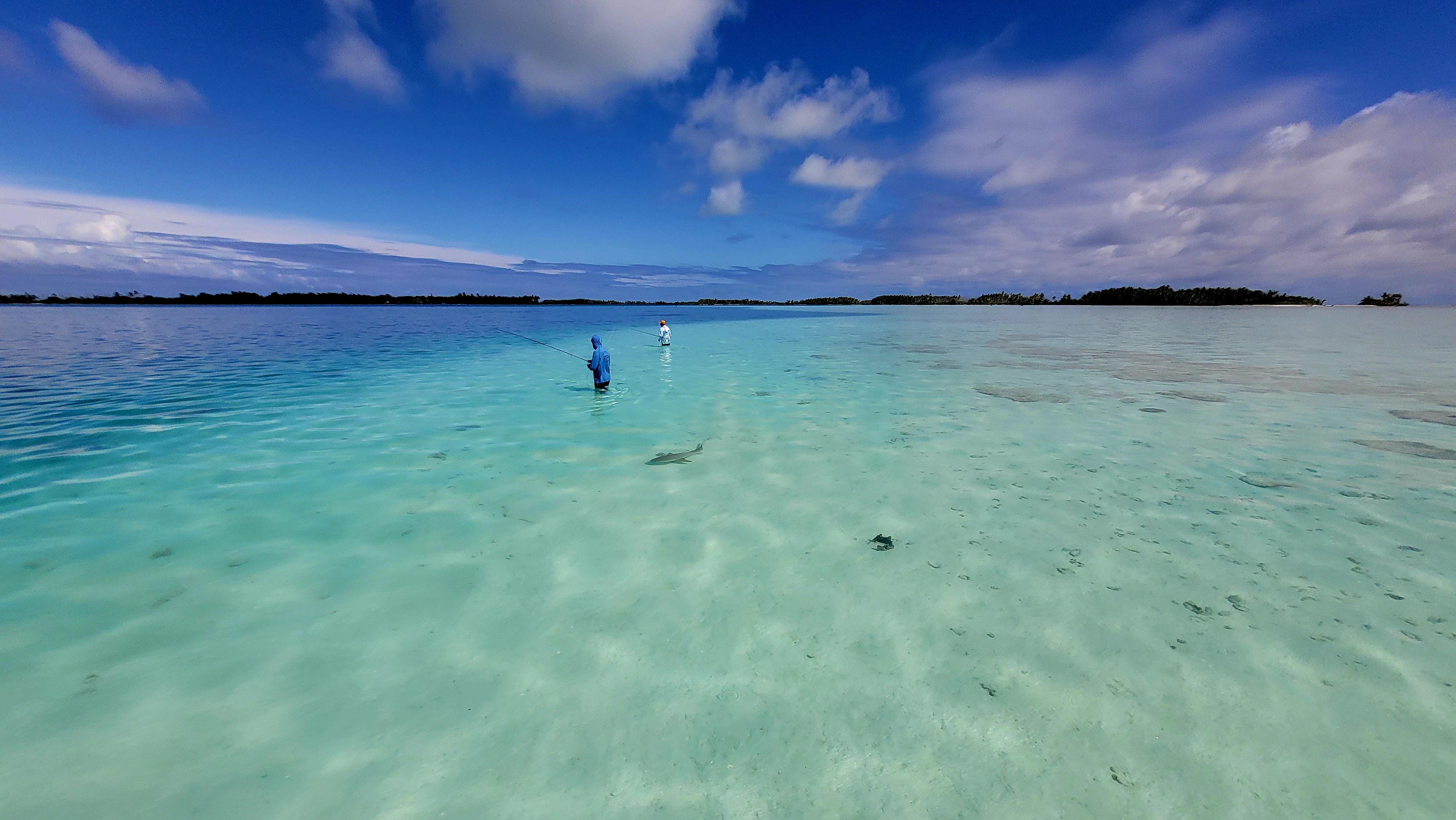
Participating in the trip, the fishing (and associated tagging) did indeed almost flow like clockwork. But that’s an illusion. Because conducting a fish research program in a remote location – using only hook-and-line methods to capture fish – is a constant challenge. To capture sufficient fish, and do it safely (for humans and fish), means accounting for every variable.
It means paying attention to changing weather conditions, predators, tides and habitat. It means constantly inspecting and improving every piece of gear, all the way down to individual hooks. Attention to detail and being adaptable to changing conditions is absolute key to this research project’s success.
The Fishing for Science program launched in 2018. On December 5, 2022, the 1,000th fish was tagged, a significant milestone in this challenging environment.
Let’s take a look at what it took to get there and why those 1,000 fish matter.
Scientific Angling
In short, the Fishing for Science program launched at Palmyra with the following aims:
- determine the impact of recreational fly fishing on post-release survival of the targeted species.
- track growth rates across the size range of these species through recapture events.
- evaluate the impact of fly fishing on the behavior of blacktip reef sharks toward these targeted species.
- document the population dynamics, home-range and daily movement patterns of the targeted species at Palmyra Atoll.
The project has been developed and led by Kydd Pollock, Pelagic Conservation Strategy Lead for The Nature Conservancy in close partnership with the Jenn Caselle lab at UC-Santa Barbara. You can read more about the goals of the program and my trip in my previous feature.
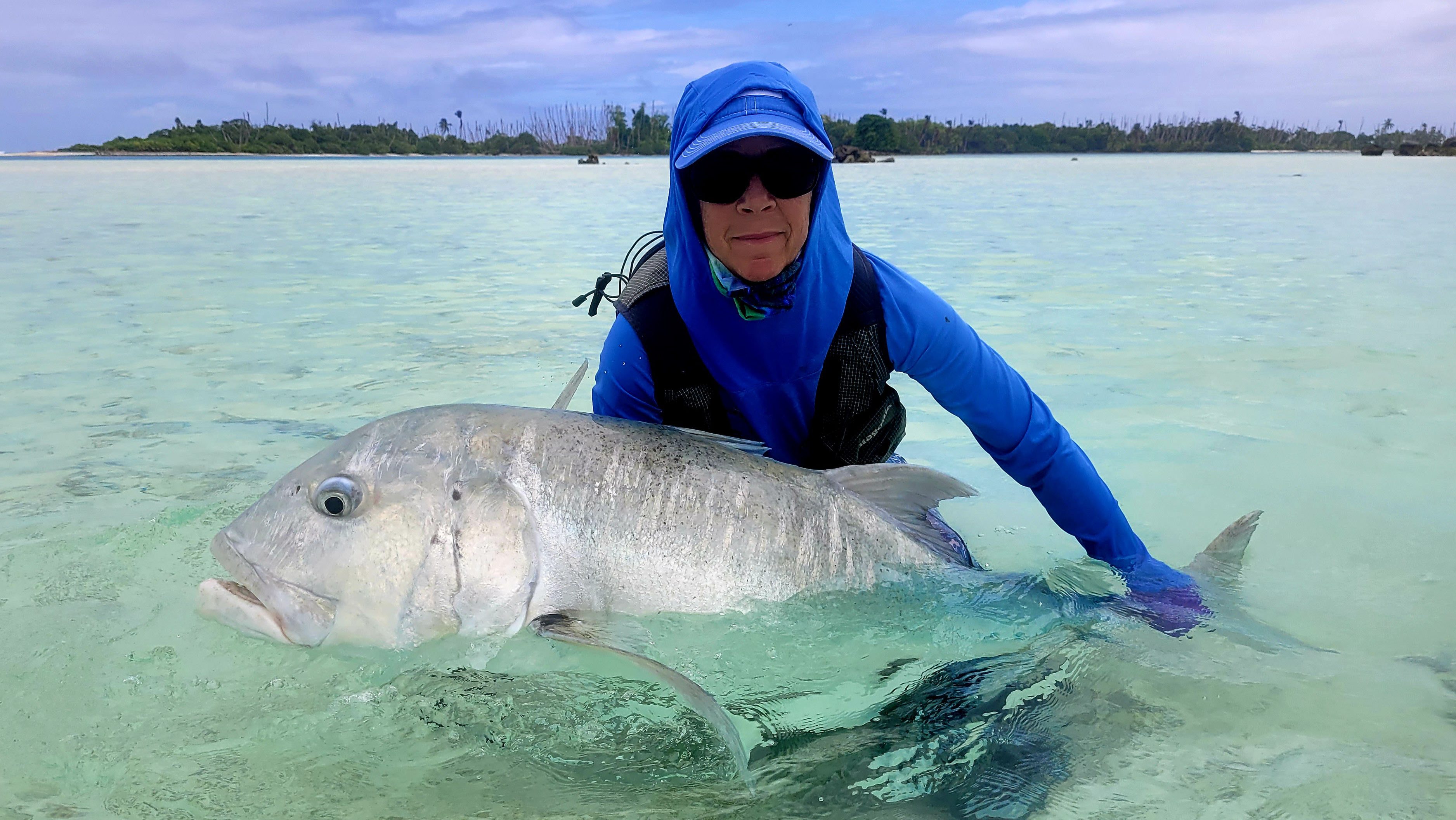
Pollock knew, when he launched this research program, that it had to be a numbers game. Each fish caught has a microchip (called a Passive Integrated Transponder or PIT tag) inserted. This tag doesn’t track fish’s movements. But if the fish is recaptured, the tag is read by a scanner. Each recapture provides data on fish growth, survival rates, movement and more.
With any wildlife research like this, many animals must have tags for significant data collection. One of the best known conservation projects is North America’s bird banding program. More than 1.2 million birds are banded by biologists each year. But, depending on species, recovery rates for those bands ranges between 0.1 percent and 20 percent. You need a lot of bands to gather any bird data.
Palmyra represents a much smaller ecosystem, of course. But there remain challenges. First, many fish researches use mass-catch techniques like electrofishing and nets. On Palmyra, captures are restricted to angling techniques: fly fishing, spinning and hand lines. And the target species have a reputation for being difficult to catch.
Pollock grew up on a charter fishing boat, and he quickly recognized the need to innovate. “You need to be constantly looking at ways to improve catch techniques,” he says. “With Fishing for Science, we are always trying new lure colors, new techniques, fishing new areas and analyzing what works and what doesn’t.”
Using flies and surface poppers are effective with bigger fish (and are certainly exciting for anglers). But Pollock recognized that these can be very time-intensive and challenging ways to catch fish. He began experimenting with other fishing methods, including trolling small squid lures behind the boat. This method saw immediate results in hooking lots of smaller bluefin trevally (and also resulting in some of the largest giant trevally), a perfect way to get a lot of target fish tagged. Trolling accounted for the bulk of our catches during my time at Palmyra.
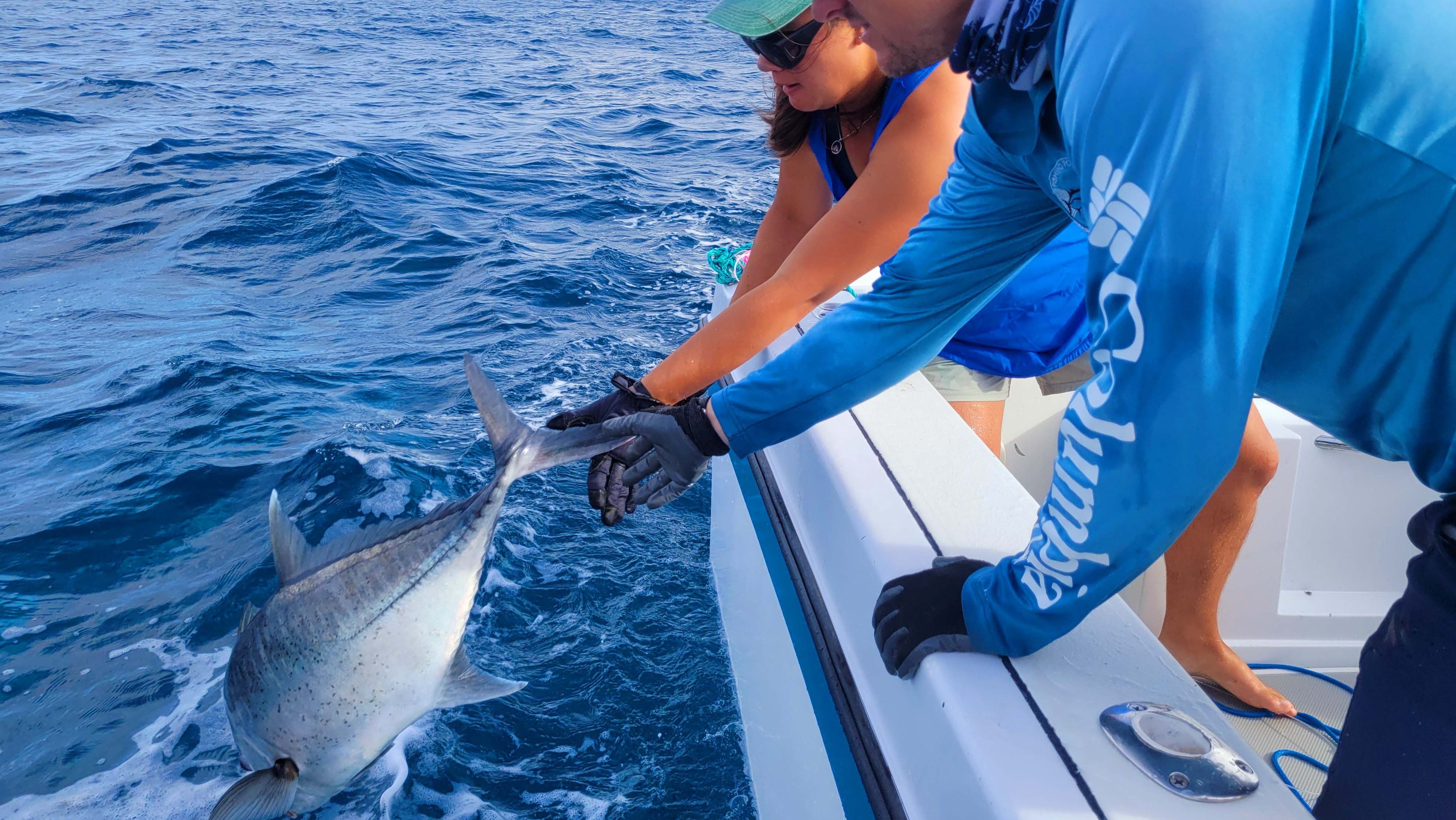
Pollock’s tinkering has led to some truly unusual solutions, like using the handles of screwdrivers to fashion sturdy, effective lures for hand lining. “Trevally actually aren’t picky about what they bite,” he says. “There are a lot of hungry mouths around Palmyra. When there is prey available, the fish can’t dilly dally. They strike quickly.”
But aside from getting fish tagged, there’s another concern: getting fish on board and released safely.
Catch, Tag, Release
Any responsible recreational angler knows fighting a fish quickly is key to fish survival. Prolonged fights, keeping a fish out of water a long time and rough handling all reduce fish survival, whether we’re talking trout in a blue-ribbon stream or trevally at Palmyra.
An added challenge at Palmyra is sharks. The atoll has a very large population of oceanic predators, a sign of a healthy ecosystem. Losing fish to sharks is not an acceptable outcome.
As such, Pollock pays close attention to gear. It has to withstand the brutal fights of giant trevally. It also has to bring fish to boat quickly. The rod, line, leader and lure all have to withstand a lot of punishment. And the anglers have be ready to “process” fish quickly once on board.
Despite that attention to detail, fish do sometimes break free with a hook in their mouth.
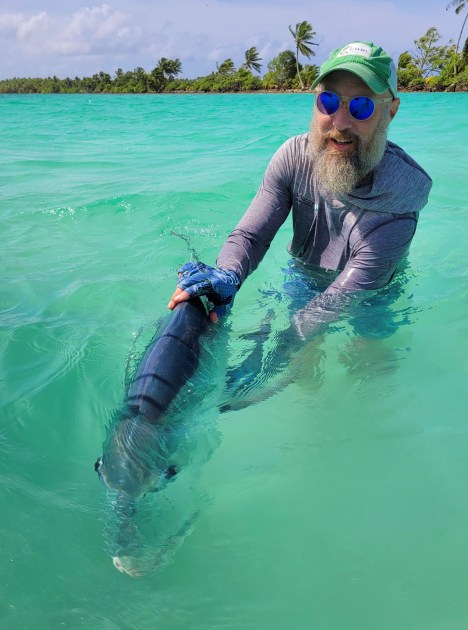
“Some fish just get away and that is why it is called fishing and not catching,” says Pollock. “In order to be the best possible stewards of this recreational catch and release research resource, we only use non-stainless barbless single hooks on all fishing methods but take it one step further in utilizing light gauge wire hooks that are likely to rust very quickly if a fish was to escape with a hook in its mouth.”
Basically, the hook has to stand up to hard-fighting fish, but also allow the fish to easily shed the hook if it breaks off during the fight.
During a recent Fishing for Science trip, a great example showed how this works. A giant trevally fought hard and evidently rubbed the leader on Palmyra’s often-rough bottom during the fight. When the researchers grabbed the leader to secure the fish for tagging, the line broke and the fish swam away with a small fly in its mouth.
About 20 minutes later, the researchers were walking across the white sandy flat to the boat when they looked down and saw a bright blue object on the bottom. Upon further inspection in the elbow-deep water, the object was the exact fly that had been lost minutes earlier.
“It was a great way to see how fast the fish shed any lost fishing gear and remain in their pristine condition,” says Pollock.
1,000 Fish
The results of that attention to detail and hundreds of hours of scientific angling are bearing fruit.
On December 5, scientific angler Casey Capparelli tagged a bluefin trevally, the 1,000th fish tagged over 8 research trips. (Sixty-three more fish were caught on that trip, bringing the total to 1,063 fish tagged).
With more fish tagged, more fish are being recaptured. During the last two research trips, 7 trevally were recaptured (compared to one recapture on my trip). These included 3 fish caught by Hawaiian master angler Kawika Auld, who participated in my trip a year ago.
It also included a recaptured bluefin trevally “at liberty” for 1,262 days – nearly 3.5 years — since it was first caught.
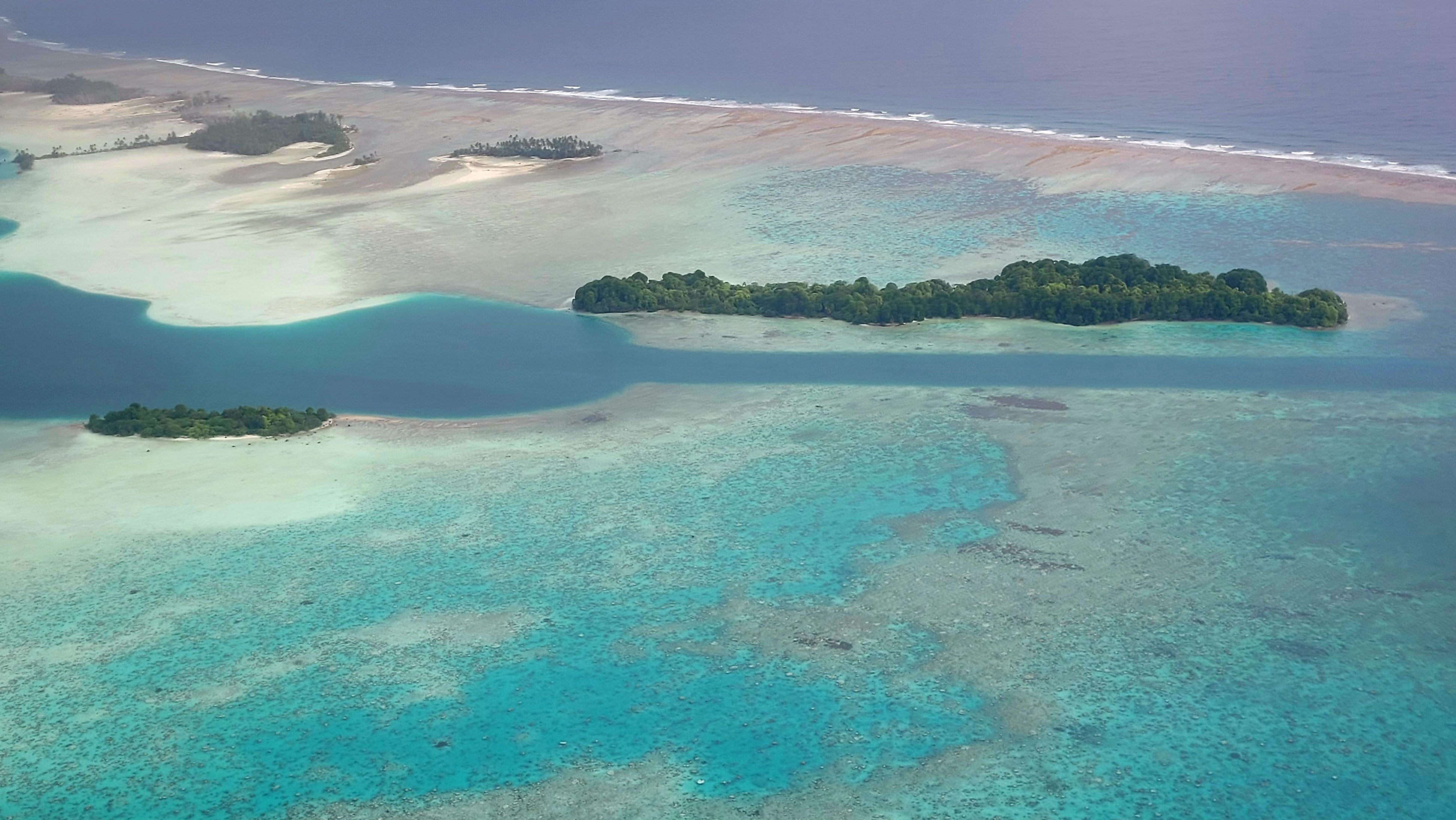
Interestingly the project has also now seen a couple recaptures within 48 hours of original tagging. These fish were in the exact same location, fought very hard, in excellent condition with only the faintest of tag insert mark to be seen.
Another giant trevally caught on a 2022 trip measured 120 cm – with an estimated weight between 80 and 90 pounds – making it one of the biggest fish caught on a research trip and on a fly.
“As the program goes on, we’re seeing increased recaptures, that provides better survivorship and growth knowledge” says Pollock. “It’s exciting to see results after the efforts and dedication of scientific anglers.”
I know all of us who have participated in this program feel incredibly fortunate to have this once-in-a-lifetime opportunity. The memories of the fishing as well as Palmyra’s incredible beauty and wildlife can warm even a gray winter day. But it’s more. It’s the feeling of participating in a exceptionally valuable research project, one that will continue to build and can help shape recreational catch-and-release fishing and Palmyra’s conservation program.
“Since 2018, we’ve had 8 individual research tagging trips,” says Pollock. “It has been so gratifying to see how each of those trips collectively build this dataset. One thousand fish was a big milestone for us. We expect to have more recaptures and gather more fishery data in the near future. I look forward to seeing this research program continue to progress and allow us to gather greater insight into recreational saltwater fishing at Palmyra and beyond.”
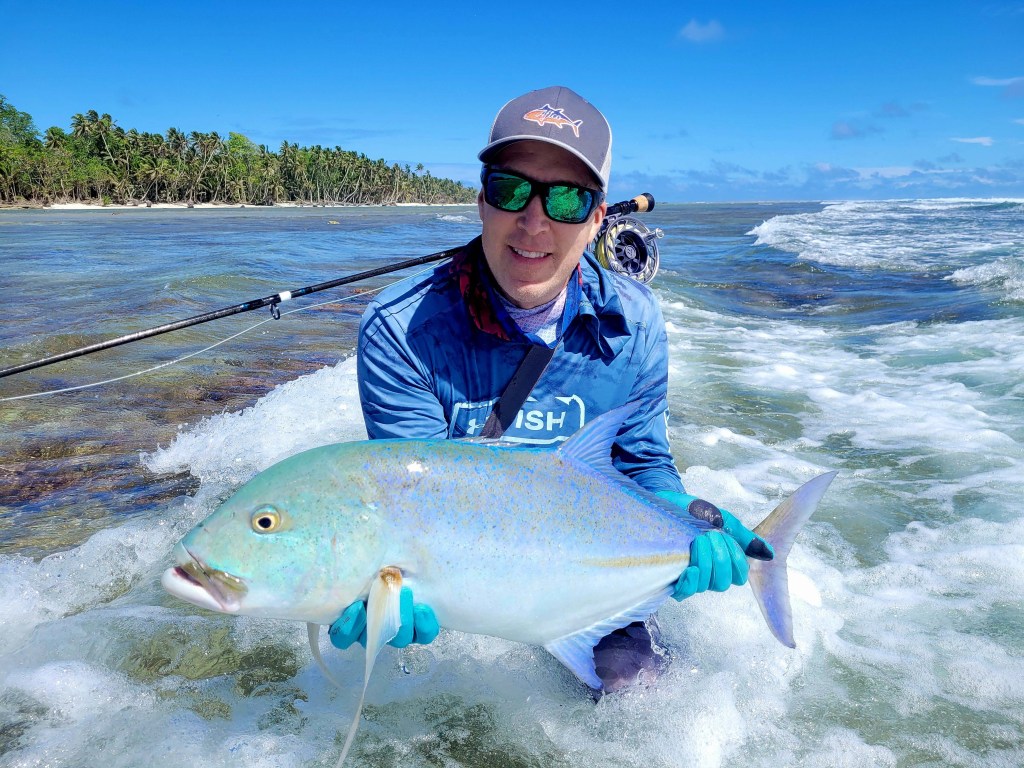



I’m a farmer and I do eat eggs, dairy and some meat and fish, so I’m definitely no PETA member. However, despite fishermens’ rhapsodic musings about all the sublime and poetic aspects of fishing, it still amounts to jerking fish out of the water by a steel hook stuck in their mouth. Catch and release is typically survivable experience for the fish, but it would hardly seem to be an enjoyable one. I’m not against fishing and I eat fish, but I don’t pretend that it practically brings joy to the fish being caught, like way too many anglers seem to.
Palmyra is in the middle of nowhere. Who is going to be able to spend the money to get all the way out there and go sport fishing? Rich people. Or at least “very well-off people,” since the wealthy don’t seem to like being called rich. The same type of people who go to Africa to trophy hunt exotic wildlife.
Science in the service of wealthy sports fishers is not very noble science, in my opinion. What’s the next tagging project going to be about — catch and release whaling?
I completely concur with Mary Finelli.
It’s perhaps worth considering that the ever-present need to make a living (by any means) and the ways that human societies have evolved to accomplish that goal is often the driver of our narcissistic self delusion that we’re doing it for whatever benefit we claim will accrue to the poor target species.
Wildlife refuges should be just that: refuges for wildlife, not places where people can torture the inhabitants for fun! Fishing isn’t sport, the fish are victims not willing participants. Science has shown that fishes can suffer fear and pain. They are sentient beings who deserve respect and compassion not gratuitous cruelty.
https://www.FishFeel.org/fish-sentience/